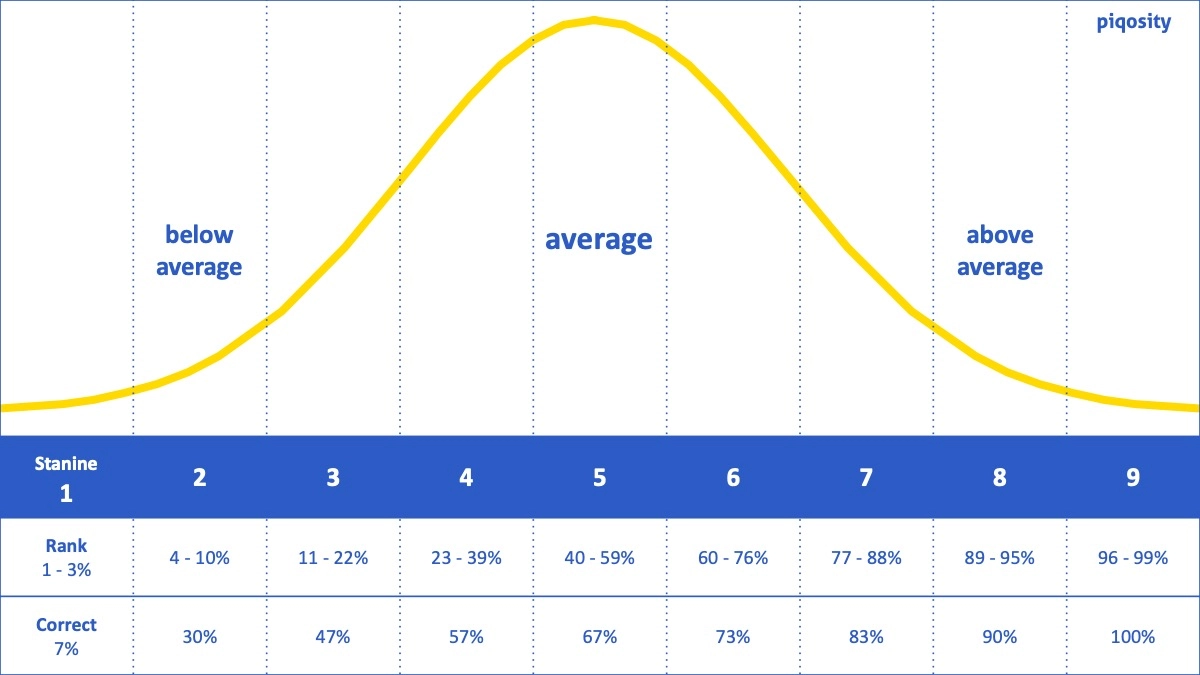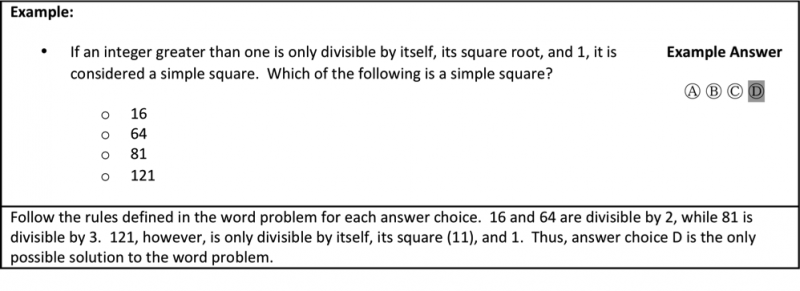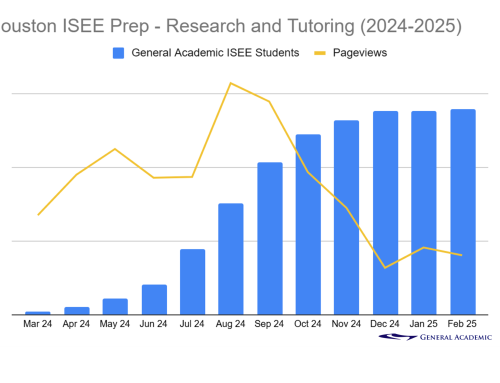During the 2024-2025 fall testing cycle, just over 300 Houston-area students prepared for their ISEE and SSAT private school admissions tests with General Academic. While every child’s situation is unique and results cannot be guaranteed, we are delighted to see such excellent outcomes from this year’s cohort. In particular, our students taking the ISEE Lower Level for applying to 6th grade and the ISEE Upper Level for applying to 9th grade did exceptionally well. On average, our students boosted their composite ISEE scores by 2.0 stanines or just over 30 percentile rankings.
What is the ISEE test?
The ISEE is a peer-normed, standardized entrance exam required by most Houston-area private schools for admission. We recommend that students take the test twice (once in the fall testing period and again in winter) before submitting their ISEE results in January. The test contains 4 scored sections and 1 non-scored essay:
The Upper Level and Middle Level:
- Verbal Reasoning (VR) – 40 questions and 20 minutes
- Quantitative Reasoning (QR) – 37 questions and 35 minutes
- Reading Comprehension (RC) – 36 questions and 35 minutes
- Mathematics Achievement (MA) – 47 questions and 40 minutes
- Personal Essay – 1 prompt and 30 minutes
The Lower Level:
- Verbal Reasoning (VR) – 34 questions and 20 minutes
- Quantitative Reasoning (QR) – 38 questions and 35 minutes
- Reading Comprehension (RC) – 25 questions and 25 minutes
- Mathematics Achievement (MA) – 30 questions and 30 minutes
- Personal Essay – 1 prompt and 30 minutes
Students take the ISEE Upper Level to apply to high school (9th grade), the Middle Level for grades 7 & 8, and the Lower Level for grades 5 & 6. In Houston, the Upper Level is the most popular.
How is the ISEE test scored and what is a good score?
When you hear other parents discussing ISEE scores, they are usually referring to stanine scores. To understand a stanine score, take a normal curve which represents the testing population and divide it into 9 evenly sized slices. In general, a good ISEE score for an academically competitive school is a stanine score of 7, 8, or 9. Stanine scores of 4, 5, and 6 are considered average, and scores of 1, 2, and 3 are below average.
However, defining a “good score” really depends on several factors, including the schools to which you are applying. Very academically rigorous schools like St. John’s, Kinkaid, Strake, and St. Agnes generally prefer high scores like 7 and 8, while more broadly-focused schools like Episcopal, Emery/Weiner, and Houston Christian are more tolerant of average scores like 5 and 6.
Like most standardized tests including the ACT and SAT, the ISEE is a peer-normed test, which means that your child will be scored relative to all students at their grade level who have taken the ISEE over the last three years. This Norm Group does not include their current classmates or other students in the same grade for the year your child takes the ISEE.
Impressive Exam Outcomes
Before their preparations began, our students averaged around the 39th percentile on their diagnostic. After working with us and diligently following through on our practice recommendations, their scores improved significantly to be above the 70th percentile overall. We are very proud of our students’ efforts, and we are thrilled that our curriculum and guidance helped so many students succeed!
Verbal Reasoning – Shortest and Quickest Section
The Verbal Reasoning section (VR) is comprised of synonym and sentence completion questions. In practice, this section is mostly a test of a student’s vocabulary, which is generally built over time by regularly reading challenging material.
Students tend to score highest in Verbal Reasoning on their diagnostic exam, with last year’s students scoring around the 50th percentile. However, students this year averaged around the 35th percentile at the start, showing a greater weakness with vocabulary. Despite this challenge, our students demonstrated impressive gains by improving 1.8 stanines (27 percentile rankings), which is up from the 10 percentile ranking improvement last year.
We are always honing our study strategies to help students be productive both with their tutor and in their independent work. One great way to help your student improve their Verbal Reasoning score is by using flashcard lists, like the ones on Piqosity.com. We also recommend recording unfamiliar words encountered during practice, researching the etymology of words and their parts, identifying synonyms for each word, and using news words in writing and conversation.
Given that building vocabulary is a long-term process, we strive to help our younger students enjoy reading from an early age, such as by having them read great books known to improve vocabulary acquisition.
Quantitative Reasoning – Most Challenging Section, Biggest Score Gains
The Quantitative Reasoning section (QR) consists of math word problems and is by far the most challenging section of the ISEE for most Houston students.
In Quantitative Reasoning, our students showed a substantial improvement of 2.4 stanines (37 percentile rankings), the highest gain across all of the test sections.
We attribute this improvement to our tutors’ great ability to remediate all weaknesses in math and teach our students new concepts, including those not yet taught in school. Our tutors work hard to strengthen each student’s understanding so that they’re better equipped to apply those skills to novel and complex math questions.
Reading Comprehension – Most Competitive Section
The Reading Comprehension section (RC) is composed of six passages of approximately 400-600 words that are accompanied by questions about the main idea and author’s purpose of the passage (and more).
This year, our students performed best in RC on their diagnostic, which of course means that students generally saw the least improvement there out of the ISEE’s four sections. However, we still saw great gains of 1.5 stanines (23 percentile rankings) on average!
Reading Comprehension is the most competitive section of the ISEE in that most students tend to score highly in this section. Many students taking the ISEE come from educated family backgrounds, who expose their children to reading from an early age. As such, this educated norm group starts with higher scores, and students must maximize their accuracy in order to rank highly.
Mathematics Achievement – Longest Section with Second Biggest Gains
The Mathematics Achievement section (MA) is similar to Quantitative Reasoning in that it’s comprised of math word problems, but its questions are comparatively more straightforward. While it’s usually considered easier than QR, it requires more test-taking endurance because it is the longest section on the Upper Level ISEE (47 questions in 40 minutes), and it is near the end of an already long exam on the Lower, Middle, and Upper Level ISEE.
Our students kept their momentum, and we saw an impressive 2.2 stanine improvement (33 percentile rankings)!
These fantastic improvements in both math sections showcase our students’ hard work. With structured practice and concept review, they were well-equipped to tackle any and all concepts on test day.
Essay – Not Scored But Not Ignored
The Essay is the final obstacle on the ISEE, and students have 2 pages to respond to a personal prompt, such as, “Tell us about a time that you overcame a challenge.” The Essay is not scored, but a copy is sent directly to each school so that they can see a sample of the student’s writing abilities under time constraints.
This makes the Essay a lower priority for us, but we still teach key strategies for strong essay writing. This includes ensuring the student knows how to structure a basic essay, identify specific examples that support their thesis, and respond in such a way that showcases their personality and strengths.
When to Start Preparing for the ISEE
In high-stakes standardized testing, the biggest constraints are always the student’s baseline abilities, motivation, and time. We recommend that students start by taking a diagnostic ISEE the summer before the admissions cycle begins, such as the summer before their 5th or 8th grade year.
Most of our students meet for 1 to 1.5 hours a week until they achieve their desired scores on either of two test dates in fall (usually October or November) or winter (late December or early January). Click here to see our full analysis of the ISEE prep timeline so you know what to expect.
Summary of Findings:
- This year, our students saw the most improvement in the difficult Quantitative Reasoning section, with average gains topping 2.4 stanines or 37 percentile rankings.
- The two math sections of Quantitative Reasoning and Mathematics Achievement are generally the hardest two sections on the ISEE, but our students showed impressive improvement of about 35 percentile rankings in each.
- Reading Comprehension is where our students started with the highest scores, and therefore saw the least improvement. Regardless, our students still demonstrated solid improvement at 1.5 stanines or 23 percentile rankings.
We’re incredibly impressed with our tutors’ capabilities and our students’ hard work this testing cycle, and we’re thrilled that we were able to help them get into the schools of their dreams!
Learn More about General Academic’s ISEE Analysis, Products, and Services








